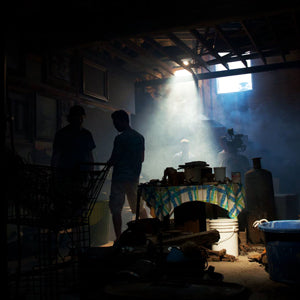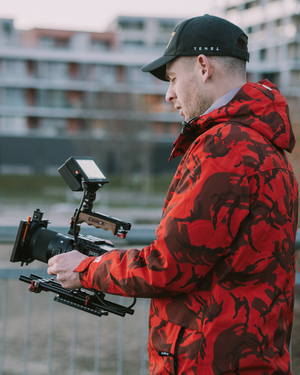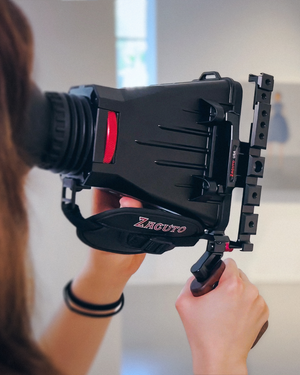
Volumetric Lighting – Part 2: Atmospheric Effects
We covered the basic of Volumetric Lighting, light sources, and shaping light in part 1. If you haven’t read that yet check it out here. In Part 2, we’ll be covering the three main atmospheric effects used in Volumetric Lighting: haze, fog, and smoke.
As a quick reminder, Volumetric Lighting is controllable “rays of light” that you can see. Light is passed through a three-dimensional medium (the effects), just like in the real world.
OK, so let’s talk about the atmospheric effects most commonly used by filmmakers…


Haze
The practice of “hazing” is very common in video production and is used in a large majority of commercials, TV and films. “Hazing” simply means you are putting a very thin haze in the air that will allow the light to be more visible. This adds depth and gives your scene a dramatic look.
Light haze was used to create depth and diffusion without distracting from visuals on this Zeiss short by James Cawley & Cinematographer Chad Shellabarger.
The most common way to achieve this look is with a haze or Hazer machine. Similar to a fog machine, it uses an oil based liquid (for a thicker, longer lasting haze effect) or a water based solution (for a thinner and faster dispersing haze effect). Alternate methods of generating haze include aerosol based haze you can purchase in a can and even burning incense if you’re working in a small enough room. Purchase or rental of an actual haze machine is always preferable to DIY solutions overall.
Please note that anytime you use an open flame or hot materials on set you need to have clearance and a safety crew and plan. It must be maintained and observed at all times, no matter how small the source.
Fog
Fog is drastically different than haze in that fog will obscure your shot. Where haze will make the light visible, fog will often decrease it substantially. Fog is great for creating silhouettes and dramatic cinematic effects. Often used in battle scenes, horror movies, and to simulate destruction, fog can be a great tool to increase your production value on a budget. Fog can be used in both foreground and background to add depth or effect. Looking to recreate that creeping fog on the ground effect you see in science fiction and horror movies? A ground fog setup of a fog machine passed through a cooled/ice container will get you the look you want. Fog machines can be purchased many different places, but the cheaper you go, the higher the chance it will not work on set. Many independent filmmakers purchase fog machines from party supply stores or big box Halloween stores only to find they stop working after several uses. There are fog machines specifically designed for extended use (films, night clubs, attractions, theatrical etc) but you will need to invest a little more of your budget for a good one.
Direct light effect and atmosphere used on the set of James Cawley’s horror film “Wendigo Carnage”. With DP Chad Shellabarger and Gaffers James Brown, Doug Lindquist & Craig Katayama.


Leave a comment